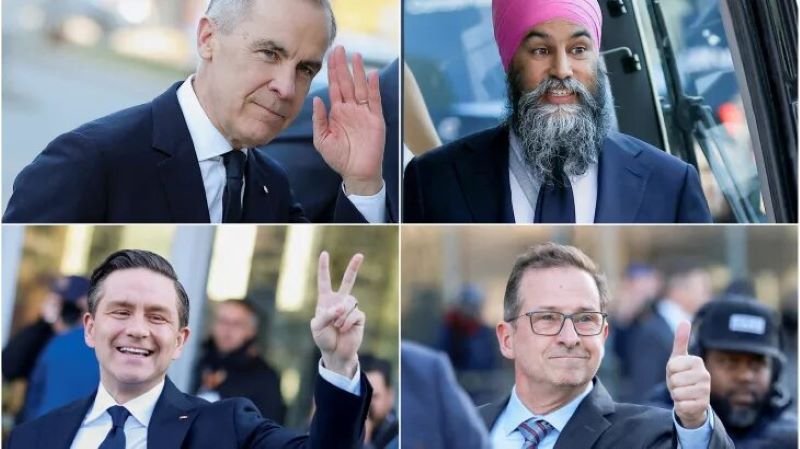Millions of Canadians head to the polls today in a snap federal election that has largely focused on how the candidates would respond to US President Donald Trump’s threats of tariffs and Canada’s annexation.
Prime Minister Mark Carney, the incumbent leader of the Liberal Party, called the election in March shortly after succeeding ex-Prime Minister Justin Trudeau. His main rival in the race is Conservative candidate Pierre Poilievre.
When the Canada’s Parliament was dissolved in March after the election call, the Liberals had 152 seats and the Conservatives had 120. The rest of the seats were occupied by the Bloc Québécois (33) and the New Democrat Party (24), and the Green Party (Two).
When Do We Expect Results?
Preliminary results are expected to come in late on Monday night or early on Tuesday morning. But officials always double-check ballots after the election.
Media will usually declare a projected winner on election night after most votes are counted. These will be based on preliminary results from Elections Canada, which handles the country’s federal elections.
Vote Counting
Federal election officials will count voted by hand in front of witnesses. Votes are counted only after polling is closed in each location where the ballots were cast.
Ballots that were cast early are counted at the local Elections Canada office for each riding. Usually, they are counted after polls end on election night but some of them can be tallied up to an hour earlier if the volume is high.
Read More: Canadians Head to Polls with US Threats Looming
This year voters set a new record for early turnout in the country with over 7 million ballots cast in advance.
Key Constituencies
Because Ontario and Quebec make up two hundred out of 343 seats in Parliament, there might an early election call if there is a sweep.
Some parts of Canada are worth watching to see trends, including the “905”, a horseshoe of municipalities around the city of Toronto that make up thirty-one constituencies.
It’s long been a battleground between Conservatives and Liberals.
Many eyes will also be focused on two constituencies in the Ottawa area.
Read More: Canada Strengthens Security for 2025 General Election
Carney, who has never been elected to the legislature, is running in Nepean – near Ottawa. Meanwhile, Poilievre is trying to retain his seat in Carleton, a constituency also outside Ottawa.
What Next if No Party Wins a Majority?
The leader of the party with the highest number of seats or elected members of Parliament usually forms government.
If no party secures an overall majority, a minority government is formed. The party with the most seats then has to pass laws by collaborating with other parties.
When Will the Winner Assume the Role of Prime Minister?
If the Liberals win, their leader Mark Carney would not require to be sworn in again. Instead, he and his cabinet ministers would continue doing their job.
If the Conservatives win, their leader Pierre Poilievre is expected to become prime minister within two weeks.
Farkhund Yousafzai is an Associate Editor at The Diplomatic Insight.



